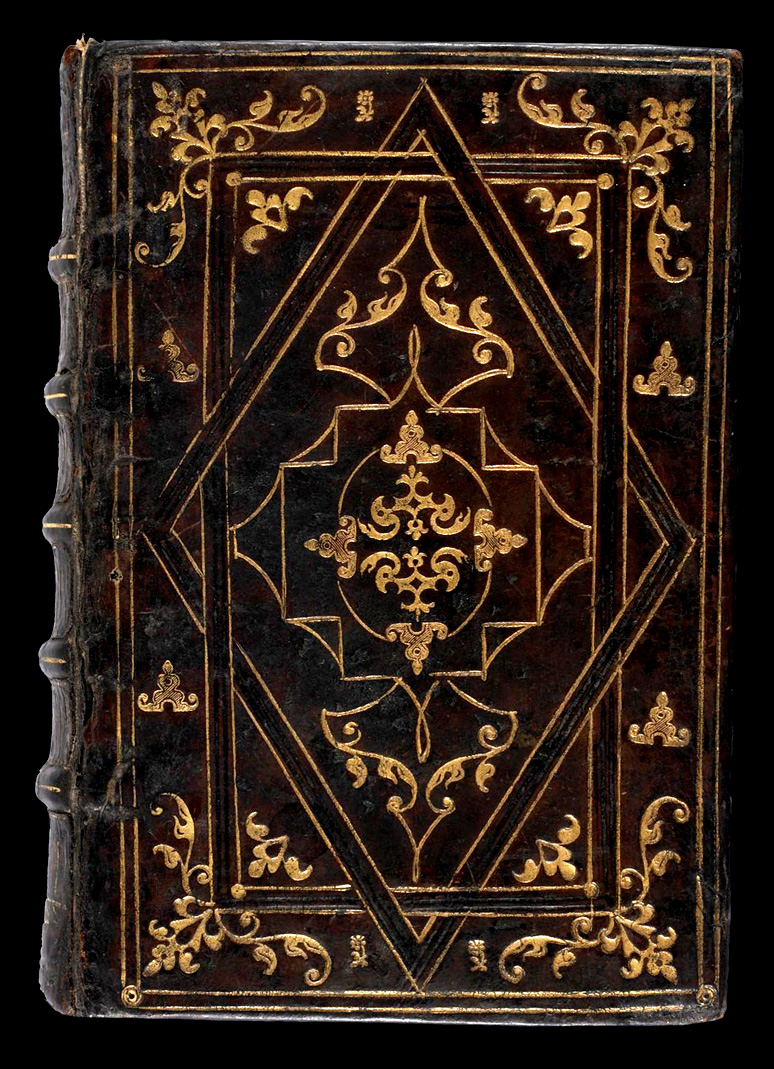

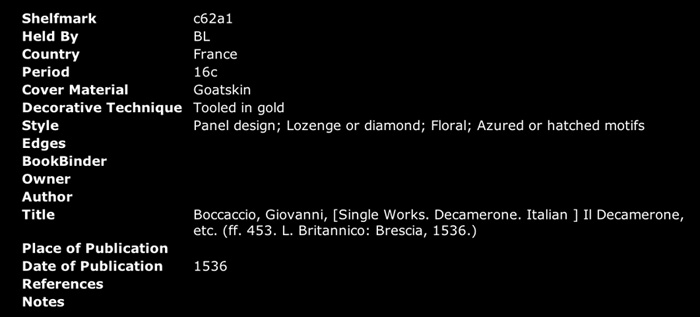
| I came across this binding while searching through the French 16c bindings in the British Library Database of Bookbindings. At first I thought this was just another Picard binding, however one or two fleurons seemed unusual and so I downloaded the image and resized it to a 600 dpi resolution at 100% scale using the scale that accompanies the reproduction. My first test was then to compare these imprints with those of Picard. |
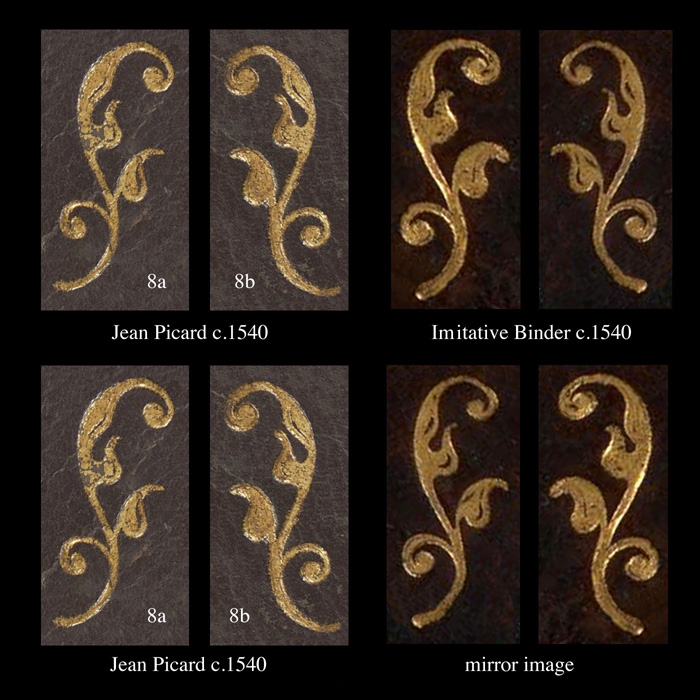
| In Comparative Diagram 1, I have compared the imprints of Jean Picard (8a and 8b) with those of the Imitative Binder. I noticed that the imprints of the Imitative binder appeared to be opposite to those of Picard i.e. Picard's 8b has a mouth that is more closed than 8a. I then started comparing other details and it occurred to me that the Imitative Binder imprints were a reverse copy of Picard's tools. This is something that we often see in replications of many different types such as John Sturt's copy of Le Clerc's engraving for the frontispiece of the 1728 Cyclopaedia of Ephraim Chambers. |
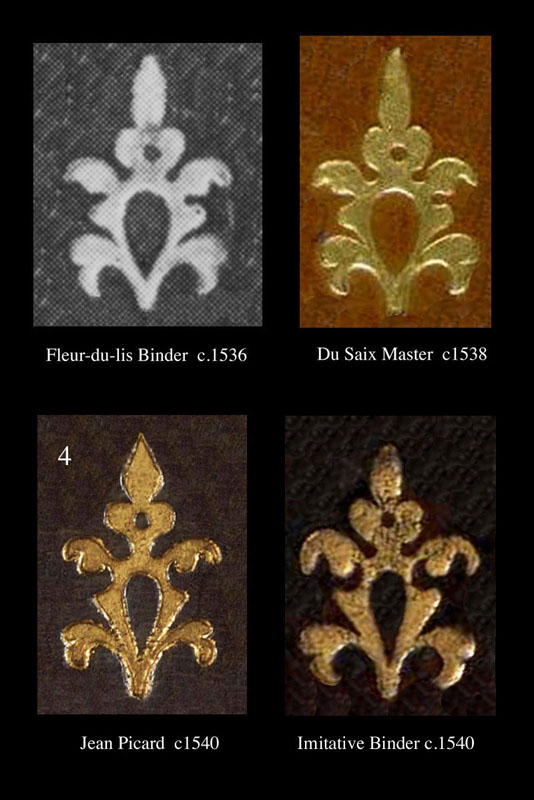
| In Comparative Diagram 2, we see that the Imitative Binder has copied Picards tool however it is not an exact copy. It is close enough however that no one would be able to tell the difference with the naked eye. |
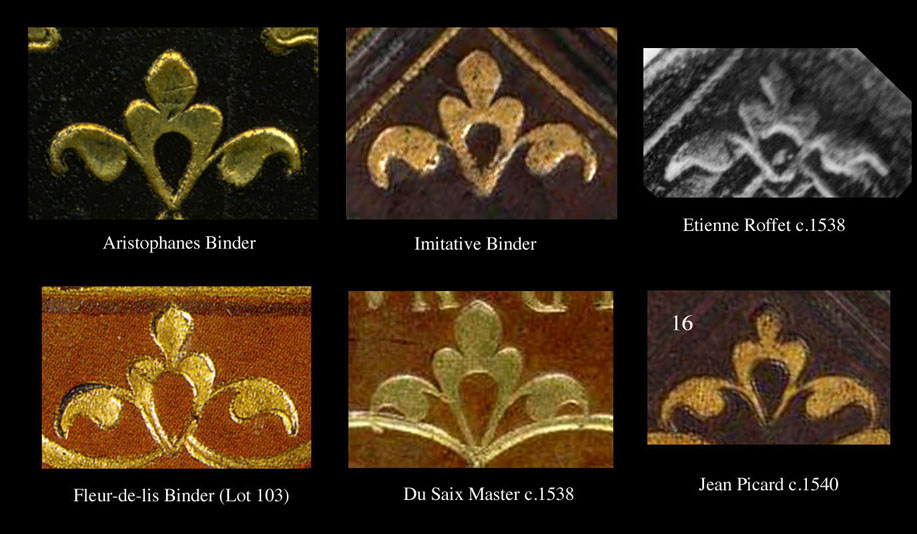
| In Comparative Diagram 3, we will have a tough time trying to decide just which example of this imprint is most like that of the Imitative binder, rather that a copy his tool seems more like a synthesis of all the other examples of this tool. Again without magnification it will be hard to say who's tool this is. |
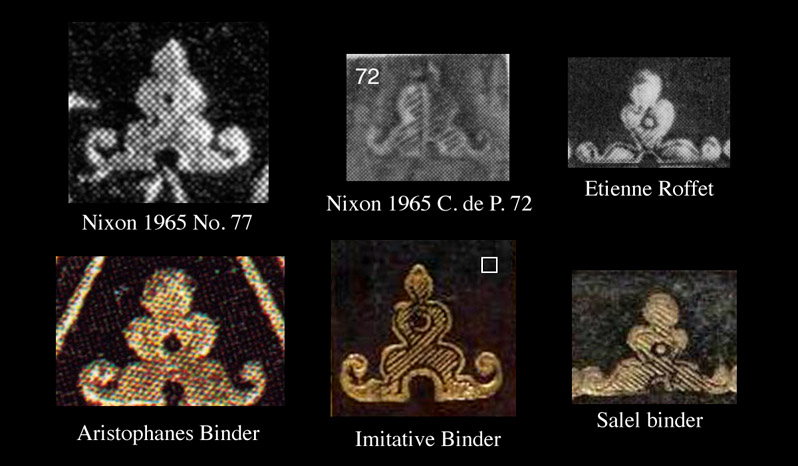
| In Comparative Diagram 4, I have assembled imprints similar to Nixon's 1965 C. de P. 72 imprint. However when you look through Nixon's reproductions of the bindings from Grolier's library, you discover that binding 77 is decorated with an imprint not exactly as per his rubbing C. de P. 72. I have reproduced binding 77 below as well as Nixon's description of it. You will notice that he has placed an asterisk next to tool 72, indicating that it is this type but not exactly the same. Anyway we can see that Picard had and used this kind of tool. The Imitative Binder appears to have copied Picards model. This tool may be more important than it looks, it is one of the first tools to show hatching or may be called "azured". Azured tools soon began to dominate, solid tools fell by the wayside. It was a rapid fad like decorative change that we might be able to fix chronologically through a study of tools like C. de P. 72. |
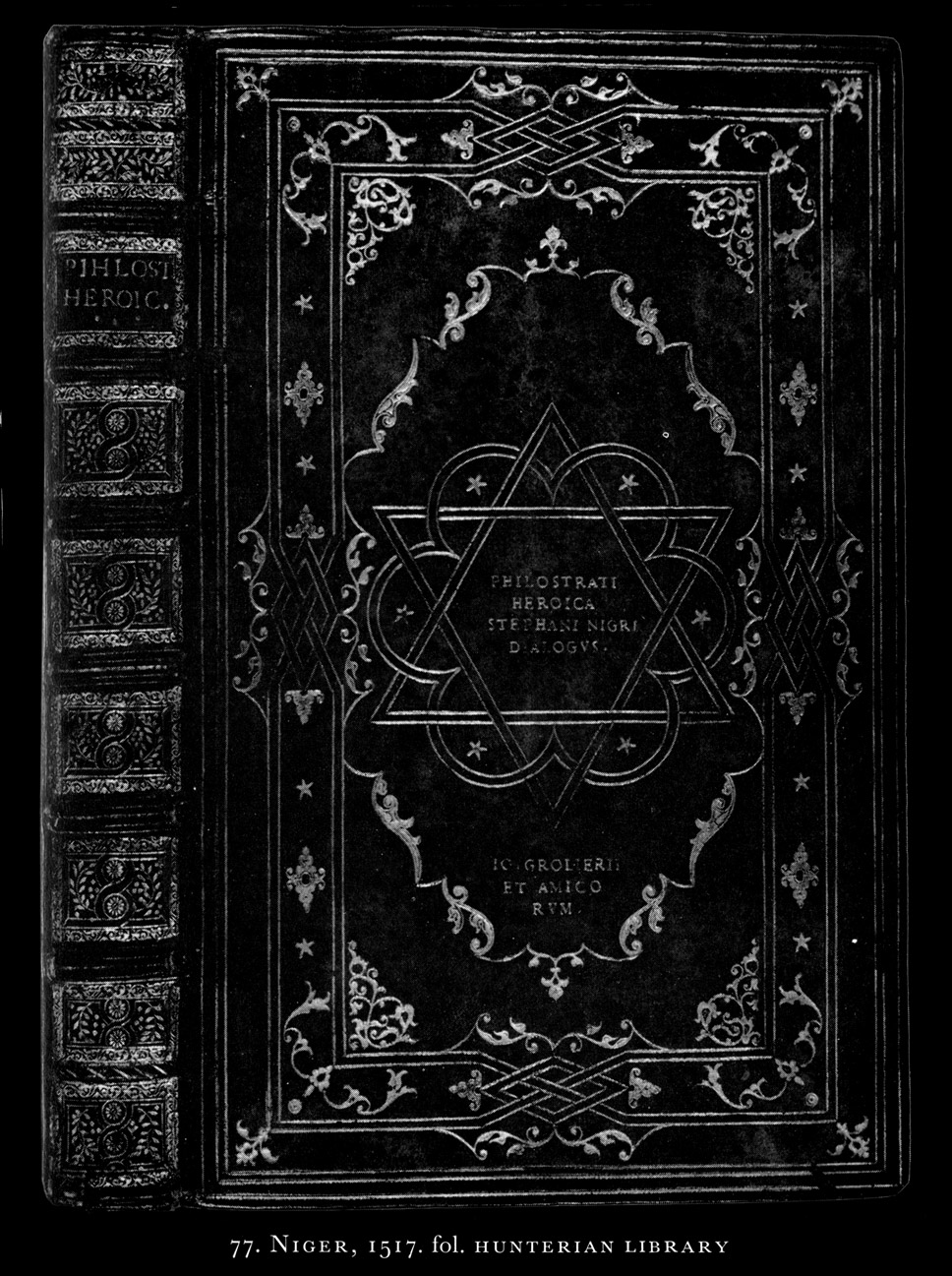
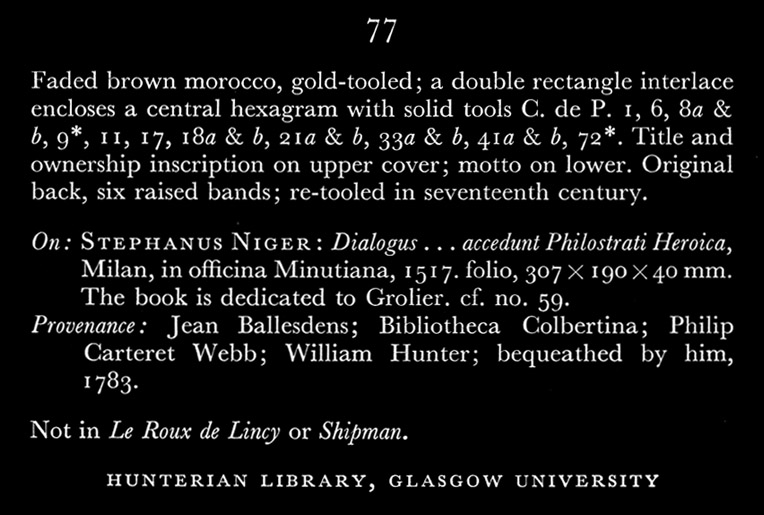
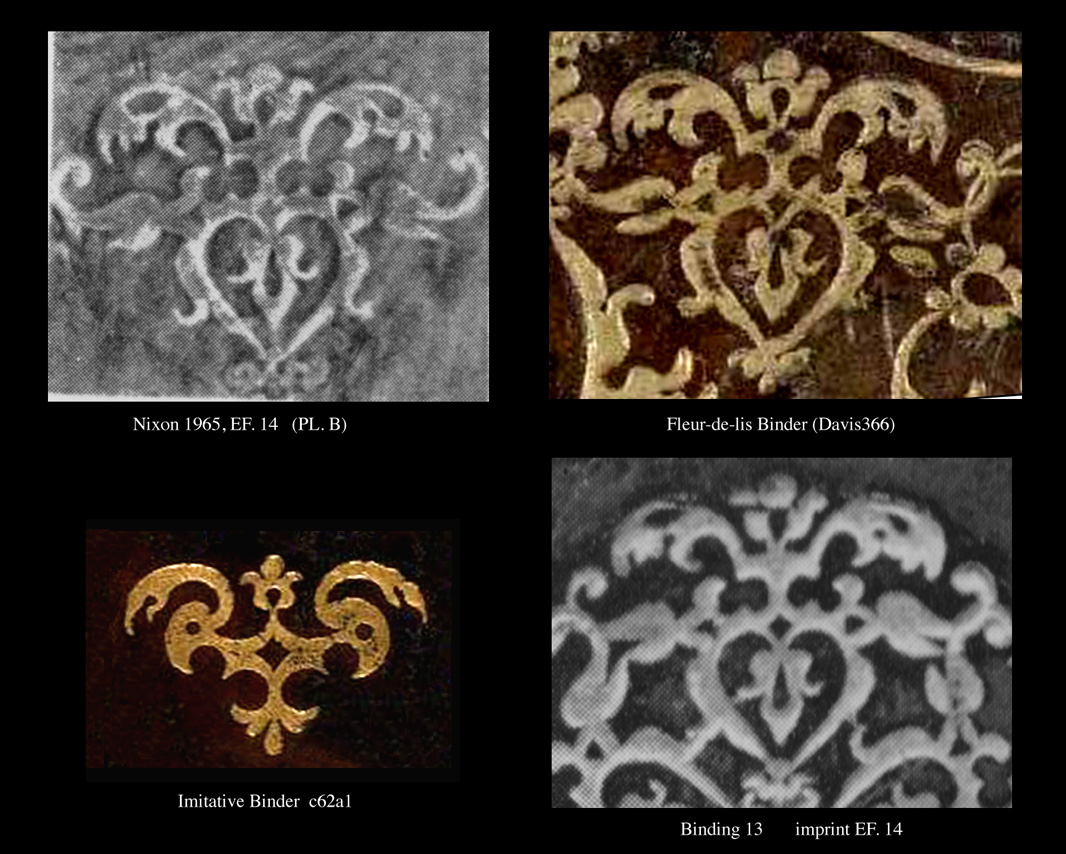
| In Comparative Diagram 5, I show EF. 14 that reminds me somewhat of the Imitative Binder imprint. There my be other parallel imprints however this rather strange fleuron of a grotesque inspiration is one to look out for, otherwise I can see this binding being easily mistaken for a Picard. But wait, lets not forget the very small fleuron, which may be a sort of signature, shown below enlarged to 600 dpi |
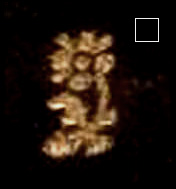
| information about the author | return to the home page of VIRTUAL BOOKBINDING |